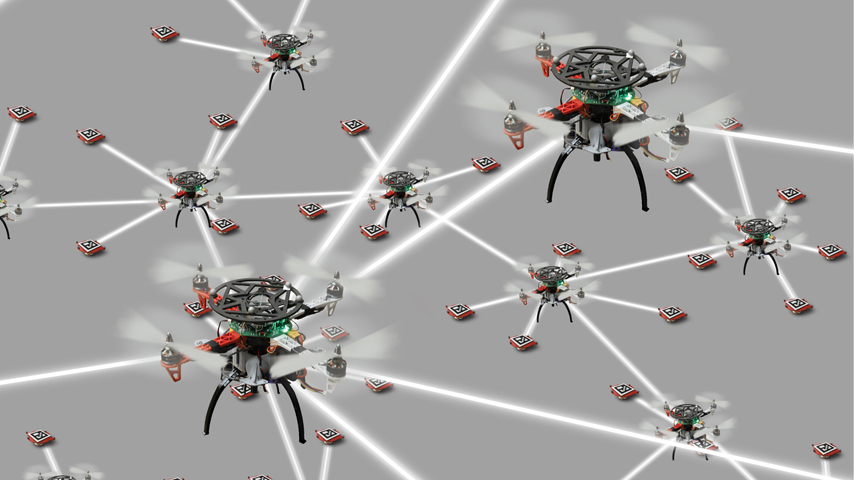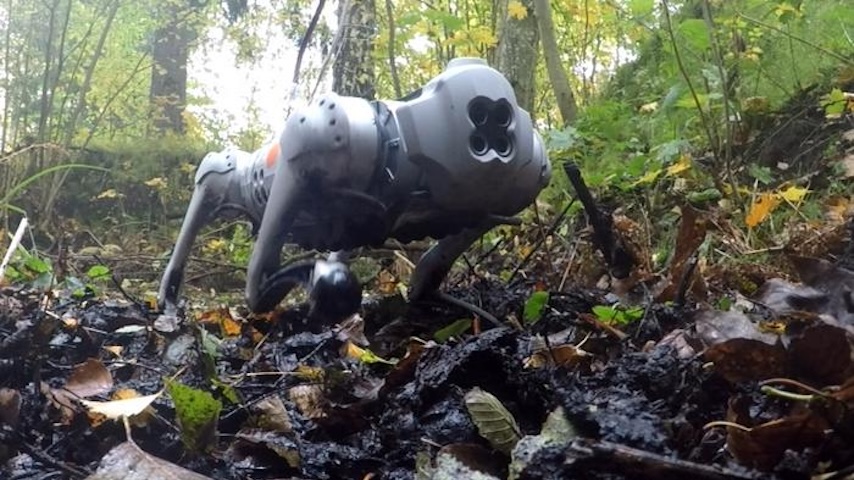Vital Design
Vital Design


Some might argue that nothing good comes from regular staff meetings. Peter Hammer, a mechanical bioengineer in Boston Children’s Hospital’s Cardiac Surgery Research department, disagrees.
For evidence, he points to an artificial valve that accommodates growth when implanted in infants with congenital heart defects. It started in the surgical suite conference room. In fact, Hammer credits most of his successes designing surgical tools and devices to, as the musical Hamilton so aptly puts it, being “in the room where it happens.”
“I share an office suite with the surgeons and go to a lot of their meetings to get more insight into their day-to-day problems,” Hammer explained. “I also spend a lot of time observing what’s happening in the operating room. Sometimes you overhear something and it gives you an idea.”
That is how Hammer learned about leaky heart valves. The heart has four valves that work in concert to circulate blood through the heart’s four chambers and arteries. In pediatric valve disease, the malformation or obstruction of one or more valves will eventually lead to heart failure.
Managing this fairly common birth defect requires surgery very early in life, Pedro del Nido, chair of cardiovascular surgery at Boston Children’s Hospital, said.
“Sometimes we can reconstruct the valve when it is faulty, but sometimes we have to replace it,” he explained. “The problem is nothing we put into these hearts will grow with them. So these patients, many of them small infants, are destined to have surgical operations over and over again.”
That means more risk—sometimes life-threatening—from surgical complications and infection.
Artificial heart valves are part of a long tradition of surgical tools developed to cut, clamp, and close the human body. Historically, those tools were created by the surgeons themselves, said Jeremy Ackerman, a professor of biomedical engineering at Emory University and the Georgia Institute of Technology.
Recommended for You: Bioengineering Special Report 2019
Pioneering surgeon Michael DeBakey, whose inventions made open heart surgery and blood vessel replacement possible, was legendary for encountering a problem in surgery and sending a nurse on a cafeteria run to grab a spoon or ladle so he could improvise a solution on the fly.
Yet, as surgical tools and devices have grown increasingly complex (and healthcare consumers are more litigious), surgeons need to reach out for additional help.
“Today, we see that most successful tools in the surgical suite come from surgeons and engineers who can find a way to work together, successfully communicating problems and potential solutions to come up with something that really works,” Ackerman said.
So, back to that conference room: After discussing a particularly difficult pediatric valve surgery, a Children’s Hospital surgeon remarked that venous valves—which close so blood in our veins does not pool in our feet every time we stand up—might provide insights into an appropriate replacement device. Hammer was intrigued.
Venous valves resemble heart valves in biological structure, he explained. They get out of the way when blood flows forward, but seal themselves to prevent reverse flow.
They are thin, strong, and grow with the body.
Yet they have a different geometry, closing with two leaflets of tissue instead of the three found in heart valves. Still, Hammer wondered, could venous valves offer hints about how to design a replacement valve that would grow with a child?
Defining the Problem
Ideas for surgical tools can arise from medical discussions, meetings, or literature reviews. Yet all too often, engineers start with a cool technology and only then search for a problem to solve, said Girish Chitnis, a senior mechanical engineer at neuromodulation device maker Micro-Leads.
“Some people have a few conversations with surgeons, maybe go to a medical meeting, or read through the literature to identify things that could be done better,” he said.
“But that’s not sufficient. You need to have a really strong grasp of a problem. Then you need to familiarize yourself with the specific application, before you can even think about starting to design something.”
Ackerman, who trains engineers to work on medical applications, strongly agrees. He advocates engineers spending lots of time observing surgeries and working directly with surgeons. This is the best way to learn their true needs before sitting down to design.
You May Also Like: A Model of Good Health
“Often, surgeons will come out of the OR and say, ‘I need a scalpel that bends this way,’” Ackerman said. “In reality, that may not be what they need at all. The surgeon can’t make the cut the way he or she wants and may think bending the scalpel will get the job done.
“But it’s important for engineers to back up and understand why the surgeon is asking for a bent blade. What’s the anatomy or physiology involved? What’s the real problem that needs to be solved? The key is getting into the OR and observing enough to understand what’s actually going on.”
It also grounds engineers in surgical realities: “For each problem, there are always some solutions,” del Nido said. Sometimes, they are very elegant engineered solutions. But whether we can apply them in the clinic is a different story.”
This is one reason why Boston Children’s has invested in the Cardiac Surgery Research department. It wants engineers engaged “in the room where it happens.” Then they can observe, study, and communicate with surgeons to truly understand their problems and the type of solutions that they would want to use.
That intimate knowledge enabled Hammer and del Nido to recognize the value of a stray reference to venous valves and to begin researching their function. Then came a series of simulations that demonstrated how a two-flap design based on venous valves could retain its functionality and stability while accommodating nearly 70 percent growth.
“I spent a good deal of time studying the why—what makes the venous valve work over a range of vessel sizes, what it is about the shape and inherent geometry of the valve that makes it a good solution,” Hammer said.
“Since we don’t have materials today that actually grow, we needed to come up with a mechanical solution to give a child with a valve defect a replacement that will function for as much of their growth as possible.”
The Drawing Board and Beyond
As the project neared concept testing, Sophie Hofferberth, a surgical resident at Children’s Hospital, took over the reins. The team estimated that the valve would have to double in diameter in order to manage the growth of a three-to-four-month-old infant into adolescence.
“The key to a solution was to focus on the interactions between the anatomy and the device,” she said. “We spent a lot of time considering the conditions, all those design parameters, which will allow the valve to work after it’s implanted for that duration of time.”
Hofferberth clocked many hours in the pathology lab, looking at valve specimens to understand the different geometric relationships between valve and blood vessel as a child grows. She researched different biocompatible polymers with mechanical properties to accommodate growth.
Coming up with that prototype took many, many design iterations. That is not surprising. Designing for the surgical suite, perhaps more than anywhere else, requires an “absolutely critical” focus on design parameters, said Arlen Ward. His company, System Insight Engineering, specializes in COMSOL Multiphysics models that study how medical devices interact with tissues.
“First and foremost, you need to focus on the things—size, efficiency, grip, durability, weight—that are going to affect patient outcomes,” he said. “You want to avoid complications and make sure your design helps make it a successful surgery. Those things are non-negotiable.”
It is also important to consider costs, Ward added. The healthcare industry is desperately looking for ways to lower costs, so any technology that lowers the cost of surgical tools and devices or the time needed to implant them is valuable.
Still, it is incumbent on both engineers and surgeons to justify every design decision, said Albert Huang, a former surgeon who founded Allotrope Medical, which makes OR electrical stimulation devices.
“You need to be able to explain your reasons for making a change or not making a change, within the frame of how it will help improve a surgeon’s workflow or improve outcomes for patients,” he said.
Sometimes, the quickest route to ensure the right design parameters is to create and test dozens of “quick and dirty” prototypes with simulations and animal models.
“You don’t need to create the whole device each time,” said Ackerman. “But getting it out of the lab and into some kind of real test rapidly is an amazing way to figure out whether you have a potential problem before a patient is lying on the table.”
When it came to the growth-accommodating valve, Hofferberth says one of the biggest trade-offs her team had to consider was how to actually achieve the “growth” they needed.
They went back and forth on different mechanical expansion options before tearing a page from angioplasty. This surgery involves inserting balloon-tipped catheters or balloon-stent combinations into a clogged blood vessel to open it up.
Hofferberth’s first prototypes used the same approach to dilate a valve-stent combination with a balloon as the child grows. This is a far less dangerous procedure than open-heart surgery.
“This is a place we really needed the feedback from surgeons—our end users—to get their take on the feasibility of different expansion mechanisms,” she said. “It’s an idea that we are still exploring, to be honest, but having the feedback from clinical trials early on has been really beneficial.”
From the Bench to the Surgical Table
As every engineer knows, sometimes even great designs go nowhere. In the surgical suite, getting surgeon buy-in is a critical yet difficult aspect of design. Inventors must show, without a doubt, that the new design is better than the tools a surgeon already uses, del Nido said.
“It’s easy to make a change when you’re convinced that the change is actually going to improve on what you have today,” del Nido said. “The trick is generating the evidence to convince you that it’s worth taking the risk.”
Ackerman believes it is easier to generate that evidence when surgeons are engaged early and often in the design process. It fosters interest and may even gain a strong clinical champion for a new technology. Still, the number of surgeons engineers need to talk with depends on the problem they are trying to solve.
“In the modern world, surgeons are highly specialized,” Ackerman said. “There may only be a hundred surgeons that do a particular procedure across the entire country. You don’t need to talk to all of them, but you do need to talk to enough to make sure that your tool works and does not make their job harder.”
To do that, engineers must speak a language that surgeons can understand.
“It’s incumbent on you, the engineer, to present things in a way that’s understandable to the surgeons,” Ackerman said. “If you present a slide full of partial differential equations, don’t expect your pitch to go well.”
Most surgeons want to see tools and devices that have undergone animal testing, Hofferberth said. While models may simulate how design affects anatomy and physiology, surgeons want to know how things work on the surgical table.
“They will ask, ‘Have you tried it in an animal yet?’” she said. “You need to show that you’ve evaluated the device in an environment that looks like the actual physiologic setting.”
Most surgeons, del Nido said, do not like to stray from the way they learned to do things. That is why they refer to surgeries as “procedures.” To sell a new technology, engineers must answer how and why that procedure can be better.
Del Nido, Hammer, and Hofferberth are continuing to refine their design for the growth-accommodating valve. While they say plenty of work remains, they are confident that they will one day have a solution that can help infants put off surgery for a decade or more.
They also believe they are inventing a new model for engineers to work with physicians: “We have a close interface between the surgeons and engineers in our group and a lot of open communication,” Hofferberth said. “That constant feedback loop is our project’s greatest strength. It is why I believe that we will come up with a design that will translate into clinical practice.”
Many more new surgical tools fail than succeed, del Nido said. Yet he believes that if doctors can open their eyes to what new technologies offer, both they and their patients will win.
“We surgeons tend to do what we were taught when we trained,” he said. “Yet there are many ways to make what we do even better for our patients.
“But to do it, you need people who understand the technology. You need people who understand the clinical applications. You need engineers and surgeons—and a lot of hard work—to get where you want to go.”
And for engineers, that means setting up shop “in the room where it happens.”
Kayt Sukel is a science and technology writer based outside Houston, Texas.
Also read: A Special Report on Bioengineering



